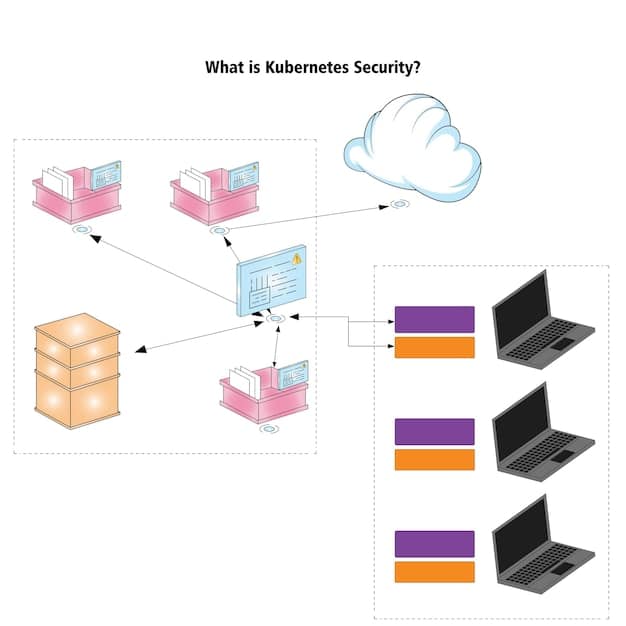Vulnerability Scanning: Secure Your US Infrastructure

Vulnerability scanning is a critical cybersecurity practice for US infrastructure, involving the systematic identification and prioritization of security weaknesses to enable timely and effective remediation.
In today’s digital landscape, securing your US infrastructure is paramount. **Vulnerability scanning: Identifying and prioritizing security weaknesses in your US infrastructure for remediation** is a crucial process to proactively address potential threats and maintain a robust security posture.
Understanding Vulnerability Scanning
Vulnerability scanning is the automated process of identifying security weaknesses in a computer system, network, or application. It’s a fundamental component of a robust cybersecurity strategy for any organization, especially those operating critical infrastructure in the US.
This scanning process helps organizations find vulnerabilities before malicious actors can exploit them. By proactively identifying and addressing these weaknesses, you can significantly reduce your attack surface and minimize the risk of a successful cyberattack.
Why is Vulnerability Scanning Important?
Vulnerability scanning plays a vital role in maintaining a strong security posture. Here’s why it’s so important:
- It helps you identify known vulnerabilities in your systems and applications.
- It allows you to prioritize remediation efforts based on the severity of the vulnerabilities.
- It enables you to comply with regulatory requirements and industry best practices.
- It reduces the risk of data breaches, financial losses, and reputational damage.
Regular vulnerability scanning helps organizations stay ahead of the ever-evolving threat landscape and ensures that security measures are up-to-date and effective.
Types of Vulnerability Scanners
Different types of vulnerability scanners cater to specific needs and environments. Understanding these types can help you choose the best scanner for your organization’s requirements.
There are several categories of vulnerability scanners, each designed to identify different types of weaknesses and target specific areas of your infrastructure.

Network Vulnerability Scanners
Network vulnerability scanners examine your network infrastructure for open ports, vulnerable services, and misconfigurations. They are essential for identifying weaknesses in your network perimeter and internal network segments.
These scanners work by sending probes to different network devices and analyzing the responses to identify potential vulnerabilities.
Web Application Vulnerability Scanners
Web application vulnerability scanners focus on identifying vulnerabilities in web applications, such as SQL injection, cross-site scripting (XSS), and other common web application vulnerabilities. They are designed to assess the security of your online applications and prevent attacks that target these weaknesses.
- Dynamic Application Security Testing (DAST): Simulates real-world attacks to identify vulnerabilities in running web applications.
- Static Application Security Testing (SAST): Analyzes the source code of web applications to identify vulnerabilities before they are deployed.
- Interactive Application Security Testing (IAST): Combines elements of DAST and SAST for more comprehensive vulnerability detection.
Web application vulnerability scanners are crucial for protecting your websites and web-based services from malicious attacks.
Choosing the right type of scanner depends on the specific assets you need to protect and the types of vulnerabilities you are most concerned about.
The Vulnerability Scanning Process
The vulnerability scanning process involves several key steps, from planning and defining scope to analyzing results and implementing remediation measures.
A systematic approach to vulnerability scanning ensures that all critical assets are assessed, and vulnerabilities are addressed effectively.
Defining Scope and Objectives
The first step is to define the scope of the scan and establish clear objectives. This involves identifying the systems, networks, and applications that will be included in the scan, as well as determining the specific types of vulnerabilities that will be assessed.
Defining the scope helps to ensure that the scanning efforts are focused on the most critical assets and that the results are relevant to your organization’s security goals.
Performing the Scan
Once the scope has been defined, the next step is to perform the vulnerability scan. This involves using a vulnerability scanner to automatically identify security weaknesses in the target systems and applications.
- Select the appropriate vulnerability scanner based on your needs.
- Configure the scanner to target the specified scope.
- Launch the scan and monitor its progress.
The scanning process typically involves sending a series of probes to the target systems and analyzing the responses to identify potential vulnerabilities.
Following these steps will help ensure a thorough and effective vulnerability scanning process.
Prioritizing Vulnerabilities
Once the vulnerability scan is complete, the next step is to prioritize the identified vulnerabilities based on their severity and potential impact. This prioritization process helps you focus on addressing the most critical weaknesses first.
Not all vulnerabilities are created equal. Some pose a greater risk to your organization than others, and it’s important to prioritize remediation efforts accordingly.

Factors to Consider
Several factors should be considered when prioritizing vulnerabilities:
- Severity: The potential impact of a vulnerability if it is exploited.
- Exploitability: The ease with which a vulnerability can be exploited.
- Asset value: The importance of the asset that is affected by the vulnerability.
By considering these factors, you can effectively prioritize vulnerabilities and focus on addressing the most critical weaknesses first.
Prioritization is a crucial step in the vulnerability management process.
Remediation Strategies
After prioritizing vulnerabilities, the next step is to develop and implement remediation strategies to address the identified weaknesses. Remediation involves taking action to fix or mitigate the vulnerabilities to reduce the risk of exploitation.
Effective remediation strategies are essential for improving your organization’s security posture and protecting against cyberattacks.
Patch Management
Patch management involves applying software updates and security patches to address known vulnerabilities in operating systems, applications, and other software components. Regular patching is essential for keeping your systems up-to-date and protected against the latest threats.
Implementing a robust patch management process helps to ensure that vulnerabilities are addressed promptly and consistently.
Configuration Changes
Configuration changes involve modifying the settings and configurations of systems and applications to improve security. This may include disabling unnecessary services, hardening security settings, and implementing access controls.
Configuration changes can significantly reduce the attack surface and minimize the risk of exploitation.
Choosing the right remediation strategy depends on the specific vulnerability and the environment in which it is found.
Best Practices for Vulnerability Scanning in the US
To ensure effective vulnerability scanning in the US, it’s important to follow best practices and adhere to industry standards and regulations.
Adhering to best practices will help you maximize the value of your vulnerability scanning efforts and maintain a strong security posture.
Regular Scanning
Vulnerability scanning should be performed on a regular basis, such as monthly or quarterly, to identify new vulnerabilities and track progress over time. Regular scanning helps to ensure that your systems are continuously monitored for weaknesses.
Scheduling regular scans is a key best practice for vulnerability management.
Compliance
Comply with relevant regulations and industry standards, such as the NIST Cybersecurity Framework and the Health Insurance Portability and Accountability Act (HIPAA), to ensure that your vulnerability scanning practices meet legal and regulatory requirements.
Compliance is an important aspect of vulnerability management in the US.
By following these best practices, US organizations can effectively leverage vulnerability scanning to improve their security posture and protect against cyber threats.
| Key Aspect | Brief Description |
|---|---|
| 🔍 Identification | Locating security weaknesses in systems and apps. |
| 🛡️ Prioritization | Ranking vulnerabilities by severity and impact. |
| 🛠️ Remediation | Addressing vulnerabilities through patching or configuration. |
| 🇺🇸 US Infrastructure | Securing critical systems specific to the United States. |
Frequently Asked Questions (FAQ)
▼
The primary goal is to identify security weaknesses in systems, networks, or applications before attackers can exploit them, reducing potential security incidents.
▼
Ideally, vulnerability scanning should be conducted regularly, such as monthly or quarterly, to keep up with new threats and ensure continuous system security monitoring.
▼
Common vulnerabilities found include outdated software, misconfigurations, unpatched systems, and weaknesses in web applications like SQL injection and cross-site scripting.
▼
Vulnerability scanning is automated identification, while penetration testing actively exploits vulnerabilities to assess real-world impact, providing a more in-depth security analysis.
▼
Prioritization ensures that the most critical and easily exploitable vulnerabilities are addressed first, maximizing resource efficiency and reducing the overall risk quickly.
Conclusion
Vulnerability scanning is an indispensable part of securing your US infrastructure, enabling you to proactively identify and address weaknesses before they can be exploited. By implementing a robust vulnerability management program, you can protect your critical assets, minimize the risk of cyberattacks, and maintain a strong security posture.





